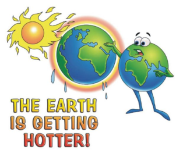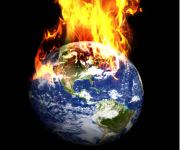signalmankenneth
Verified User
CNN —
Philip Kreycik should have survived his run.
In the summer of 2021, the 37-year-old ultra-marathon runner used an app to plot a roughly 8-mile loop through Pleasanton Ridge Regional Park in California, a huge stretch of parkland threaded with trails.
On the morning of July 10, as temperatures crept into the 90s, Kreycik set off from his car, leaving his phone and water locked inside. He started at a lightning pace — eating up the first 5 miles, each one in less than six minutes.
Then things started to go wrong. GPS data from his smartwatch showed he slowed dramatically. He veered off the trail. His steps became erratic. By this time, the temperature was above 100 degrees Fahrenheit.
When Kreycik failed to show up for a family lunch, his wife contacted the police.
It took more than three weeks to find his body. An autopsy showed no sign of traumatic injuries. Police confirmed Kreycik likely experienced a medical emergency related to the heat.
The tragedy is sadly far from unique; extreme heat is turning ordinary activities deadly.
People have died taking a stroll in the midday sun, on a family hike in a national park, at an outdoor Taylor Swift concert, and even sweltering in their homes without air conditioning. During this year’s Hajj pilgrimage in June, around 1,300 people perished as temperatures pushed above 120 degrees Fahrenheit in Mecca.
Heat is the deadliest type of extreme weather, and the human-caused climate crisis is making heat waves more severe and prolonged. Add humidity into the mix, and conditions in some places are approaching the limits of human survivability — the point at which our bodies simply cannot adapt.
“We’ve essentially weaponized summer,” said Matthew Huber, a climate professor at Purdue University.
While some people are more vulnerable to heat than others, including the very old and young, no one is immune — not even the world’s top athletes. Many are expressing anxiety as temperatures are forecast to soar past 95 degrees this week in Paris, as the Olympic Games get underway.
Scientists are still trying to unravel the many ways heat attacks the body. One way they do this is with environmental chambers: rooms where they can test human response to a huge range of temperature and humidity.
CNN visited one such chamber at the University of South Wales in the UK to experience how heat kills, but in a safe and controlled environment.
“We’ll warm you up and things will slowly start to unravel,” warned Damian Bailey, a physiology and biochemistry professor at the university. Bailey uses a plethora of instruments to track vital signs — heart rate, brain blood flow and skin temperature — while subjects are at rest or doing light exercise on a bike.
The room starts at a comfortable 73 degrees Fahrenheit but ramps up to 104. Then scientists hit their subjects with extreme humidity, shooting from a dry 20% to an oppressive 85%.
“That’s the killer,” Bailey said, “it’s the humidity you cannot acclimatize to.”
And that’s when things get tough.
It often starts with symptoms like nausea, headaches, muscle cramps, even fainting. These are all signs of heat exhaustion — your body is dehydrated and starting to lose the ability to cool itself.
From there, things can spiral.
Heatstroke happens when your body can’t use its usual tricks to cool down, like sweating and increasing blood flow to your skin, leading to a catastrophic rise in core temperature. Once your internal body temperature starts to climb above 104 Fahrenheit, which can happen within 10 to 20 minutes of exposure, “you’re moving toward death, and it can creep up on you very, very quickly,” said Bailey.
You can become disoriented and lose consciousness.
Major organs start to shut down.
Barriers that separate your gut from the rest of your intestines can become more porous, leaking deadly toxins into your bloodstream.
Finally, your heart fails.
Heatstroke “is an explosive disease,” Moseley said. “It’s an inflammatory, multi-system failure.” If not addressed immediately, it can quickly kill you.
The tragedy with heatstroke is that as it’s killing you, it’s also degrading your mental capacity, preventing you from understanding what horrible danger you’re in.
That’s why we have so many stories of people dying on runs and hikes, Moseley said. “People will be hiking, and they don’t realize it, and then before they know it, they’ve got this sepsis-like syndrome.”
The best way to treat heatstroke is immersion in a cold-water bath, Giudice said, or failing that, placing wet towels directly on the body while surrounded by fans.
But even for those who recover, nearly 30% will have permanent brain damage.
To get a better idea of how heat stress affects your body, scientists use wet-bulb temperature, which accounts for the combined impacts of both temperature and humidity.
It’s measured by wrapping a wet cloth around the bulb of a thermometer. As the water evaporates, it cools the bulb, pushing the wet-bulb temperature down. More moisture in the air means less water evaporates and less cooling happens — the wet-bulb temperature is high.
A wet-bulb temperature of around 87.8 degrees is about the maximum healthy humans can cope with, according to recent research. It might not sound that hot, but this is stifling and deadly heat — nearly 90 degrees with 100% humidity, and next to no ability for your body to cool itself.
Purdue University’s Huber and a team of scientists projected that billions of people will be exposed to this dangerous threshold as global warming accelerates. With every half a degree the world heats up, scorching, sticky heat “just expands outward in these hot, deadly blobs,” Huber said.
https://www.cnn.com/2024/07/29/climate/heat-survivability-health-death-intl/index.html


Philip Kreycik should have survived his run.
In the summer of 2021, the 37-year-old ultra-marathon runner used an app to plot a roughly 8-mile loop through Pleasanton Ridge Regional Park in California, a huge stretch of parkland threaded with trails.
On the morning of July 10, as temperatures crept into the 90s, Kreycik set off from his car, leaving his phone and water locked inside. He started at a lightning pace — eating up the first 5 miles, each one in less than six minutes.
Then things started to go wrong. GPS data from his smartwatch showed he slowed dramatically. He veered off the trail. His steps became erratic. By this time, the temperature was above 100 degrees Fahrenheit.
When Kreycik failed to show up for a family lunch, his wife contacted the police.
It took more than three weeks to find his body. An autopsy showed no sign of traumatic injuries. Police confirmed Kreycik likely experienced a medical emergency related to the heat.
The tragedy is sadly far from unique; extreme heat is turning ordinary activities deadly.
People have died taking a stroll in the midday sun, on a family hike in a national park, at an outdoor Taylor Swift concert, and even sweltering in their homes without air conditioning. During this year’s Hajj pilgrimage in June, around 1,300 people perished as temperatures pushed above 120 degrees Fahrenheit in Mecca.
Heat is the deadliest type of extreme weather, and the human-caused climate crisis is making heat waves more severe and prolonged. Add humidity into the mix, and conditions in some places are approaching the limits of human survivability — the point at which our bodies simply cannot adapt.
“We’ve essentially weaponized summer,” said Matthew Huber, a climate professor at Purdue University.
Inside a heat chamber
Kreycik had almost everything on his side when he went running on that hot day: he was extremely fit, relatively young and was an experienced runner.While some people are more vulnerable to heat than others, including the very old and young, no one is immune — not even the world’s top athletes. Many are expressing anxiety as temperatures are forecast to soar past 95 degrees this week in Paris, as the Olympic Games get underway.
Scientists are still trying to unravel the many ways heat attacks the body. One way they do this is with environmental chambers: rooms where they can test human response to a huge range of temperature and humidity.
CNN visited one such chamber at the University of South Wales in the UK to experience how heat kills, but in a safe and controlled environment.
“We’ll warm you up and things will slowly start to unravel,” warned Damian Bailey, a physiology and biochemistry professor at the university. Bailey uses a plethora of instruments to track vital signs — heart rate, brain blood flow and skin temperature — while subjects are at rest or doing light exercise on a bike.
The room starts at a comfortable 73 degrees Fahrenheit but ramps up to 104. Then scientists hit their subjects with extreme humidity, shooting from a dry 20% to an oppressive 85%.
“That’s the killer,” Bailey said, “it’s the humidity you cannot acclimatize to.”
And that’s when things get tough.
How heat kills
Extreme heat rips through your body’s defenses, quickly going from uncomfortable to deadly as the heavy feeling of a hot, sticky day turns into something more malevolent.It often starts with symptoms like nausea, headaches, muscle cramps, even fainting. These are all signs of heat exhaustion — your body is dehydrated and starting to lose the ability to cool itself.
From there, things can spiral.
Heatstroke happens when your body can’t use its usual tricks to cool down, like sweating and increasing blood flow to your skin, leading to a catastrophic rise in core temperature. Once your internal body temperature starts to climb above 104 Fahrenheit, which can happen within 10 to 20 minutes of exposure, “you’re moving toward death, and it can creep up on you very, very quickly,” said Bailey.
You can become disoriented and lose consciousness.
Major organs start to shut down.
Barriers that separate your gut from the rest of your intestines can become more porous, leaking deadly toxins into your bloodstream.
Finally, your heart fails.
Heatstroke “is an explosive disease,” Moseley said. “It’s an inflammatory, multi-system failure.” If not addressed immediately, it can quickly kill you.
The tragedy with heatstroke is that as it’s killing you, it’s also degrading your mental capacity, preventing you from understanding what horrible danger you’re in.
That’s why we have so many stories of people dying on runs and hikes, Moseley said. “People will be hiking, and they don’t realize it, and then before they know it, they’ve got this sepsis-like syndrome.”
The best way to treat heatstroke is immersion in a cold-water bath, Giudice said, or failing that, placing wet towels directly on the body while surrounded by fans.
But even for those who recover, nearly 30% will have permanent brain damage.
A deadlier future
Our bodies can get used to the heat to some extent, but it takes time, and even then, sometimes heat is simply too extreme to adapt to.To get a better idea of how heat stress affects your body, scientists use wet-bulb temperature, which accounts for the combined impacts of both temperature and humidity.
It’s measured by wrapping a wet cloth around the bulb of a thermometer. As the water evaporates, it cools the bulb, pushing the wet-bulb temperature down. More moisture in the air means less water evaporates and less cooling happens — the wet-bulb temperature is high.
A wet-bulb temperature of around 87.8 degrees is about the maximum healthy humans can cope with, according to recent research. It might not sound that hot, but this is stifling and deadly heat — nearly 90 degrees with 100% humidity, and next to no ability for your body to cool itself.
Purdue University’s Huber and a team of scientists projected that billions of people will be exposed to this dangerous threshold as global warming accelerates. With every half a degree the world heats up, scorching, sticky heat “just expands outward in these hot, deadly blobs,” Huber said.
https://www.cnn.com/2024/07/29/climate/heat-survivability-health-death-intl/index.html



